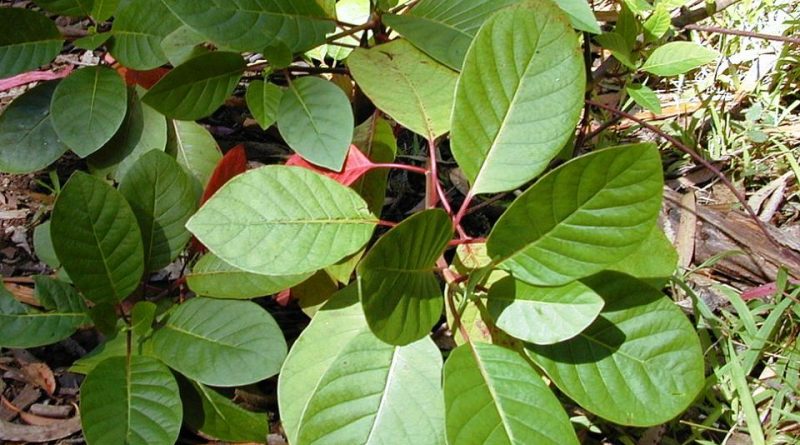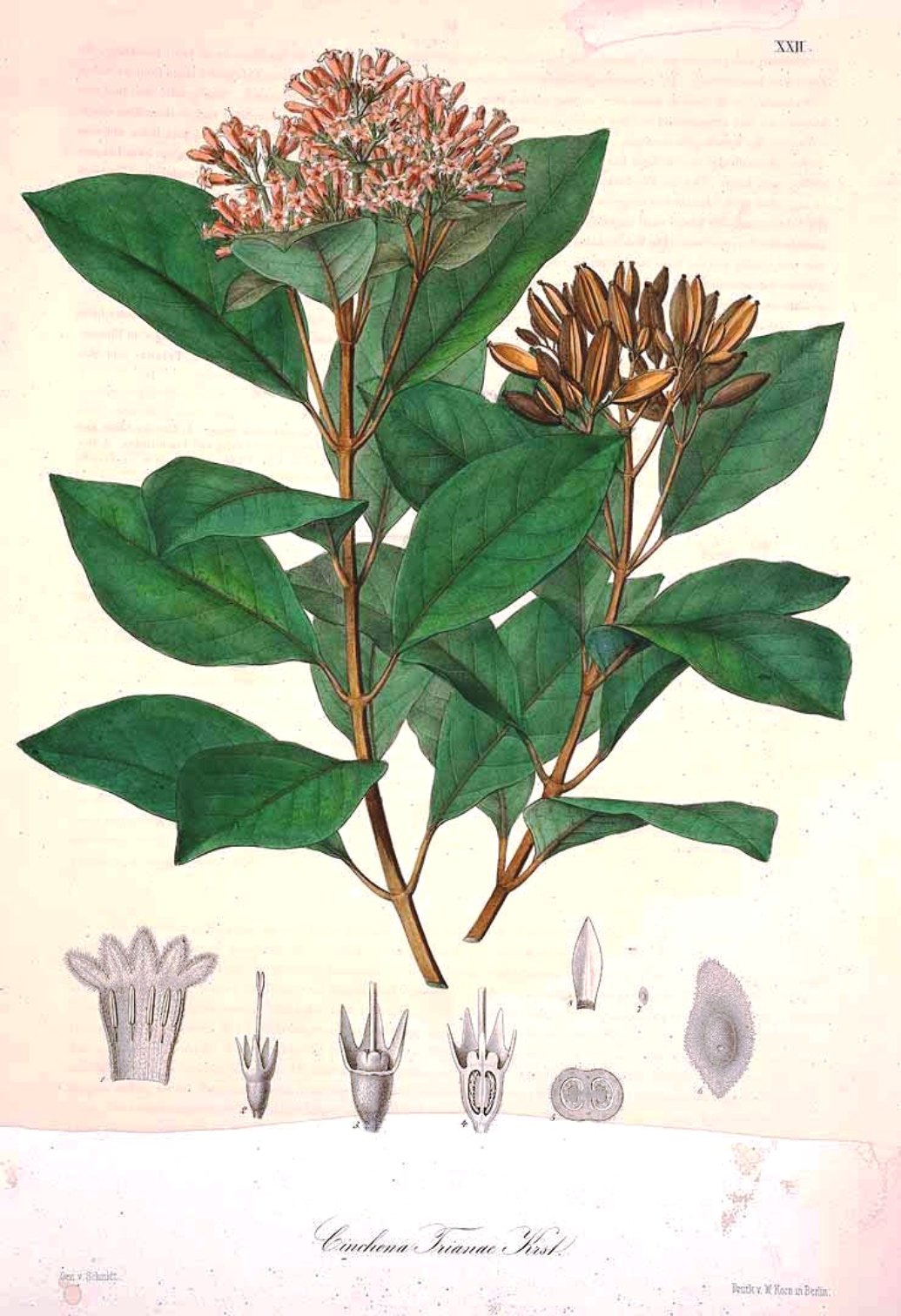Cinchona pitayensis
Cinchona pitayensis
Cinchona pitayensis (Cinchona pitayensis (Wedd.) Wedd.) is an arboreal species belonging to the Rubiaceae family.
Systematics –
from the systematic point of view it belongs to the Eukaryota Domain, Kingdom Plantae, Magnoliophyta Superdivision, Magnoliopsida Class, Rubiales Order, Rubiaceae Family and therefore to the Cinchona Genus and to the C. pitayensis Species.
The terms are synonymous:
– Cinchona condaminea var. pitayensis Wedd .;
– Cinchona corymbosa H. Karst .;
– Cinchona pitayensis var. trianae (H. Karst.) Wedd .;
– Cinchona trianae H. Karst ..
Etymology –
The name Cinchona derives from Ana de Osorio, countess of Cinchon and wife of the viceroy of Peru, who according to legend discovered on herself the virtues of cinchona bark, recovering from malarial fevers and deciding to import it to Europe (1639). The specific epithet pitayensis is not known.
Geographic Distribution and Habitat –
Cinchona pitayensis is a plant native to Colombia and distributed from this country to Ecuador at altitudes between 2400 and 3100 m. s.l.m. in the Andean areas.
Description –
Cinchona pitayensis is a plant in the form of an evergreen shrub or tree that grows between 6 and 20 meters.
The bark is wrinkled and the twigs are covered with tiny hairs.
The leaves are lanceolate to elliptic or ovate, usually about 10 centimeters long and 3.5-4 centimeters wide, with a pointed, sharp or obtuse tip, rounded base, leathery, glabrous above and often shiny; below they are hairless or powdery especially on the veins.
The inflorescences are in terminal panicles, with multiple flowers with a reddish calyx.
The fruit is an oblong capsule, 1,5–2 cm. in length, almost hairless.
Cultivation –
Cinchona pitayensis is a plant of the humid tropics, where it is found at altitudes between 2,400 and 3,100 meters.
Requires well-drained, moist soil and a location in full sun or partial shade.
Plants start flowering after 3 – 4 years and are uprooted and harvested after 8 – 12 years.
In commercial plantations, trees are given away when they are about 6 years old.
Customs and Traditions –
The bark of this plant contains the active ingredients: quinine alkaloids (from which quinine and quinic acid have been extracted), essential oil and resins.
it has anti-malarial, pain-relieving and anti-fever properties: in high doses and only on medical prescription (today quinine and its derivatives are used).
It is a tonic and digestive bitter: in small doses, in sweetened and flavored alcoholic solutions.
In herbal medicine it is used to counteract the negative effects of low blood pressure.
In cosmetics, extracts are used for frictions against oily hair.
Preparation Method –
The bark is made into tablets, liquid extracts, tinctures and powders. The alkaloid quinine extracted from the bark is used in hair oils and shampoos, tanning oils, insecticides and as a vulcanizing agent.
In the right dose it is also used to make drinks fluorescent yellow.
Guido Bissanti
Sources
– Acta Plantarum – Flora of the Italian Regions.
– Wikipedia, the free encyclopedia.
– Useful Tropical Plants Database.
– Conti F., Abbate G., Alessandrini A., Blasi C. (edited by), 2005. An annotated checklist of the Italian vascular flora, Palombi Editore.
– Pignatti S., 1982. Flora of Italy, Edagricole, Bologna.
– Treben M., 2000. Health from the Lord’s Pharmacy, Advice and experiences with medicinal herbs, Ennsthaler Editore.
Warning: Pharmaceutical applications and alimurgical uses are indicated for informational purposes only, they do not represent in any way a medical prescription; we therefore decline all responsibility for their use for curative, aesthetic or food purposes.


